Serving 589 students in grades 6-12, Queens School Of Inquiry ranks in the top 50% of all schools in New York for overall test scores (math proficiency is bottom 50%, and reading proficiency is bottom 50%).
The percentage of students achieving proficiency in math is 37% (which is lower than the New York state average of 46%). The percentage of students achieving proficiency in reading/language arts is 66% (which is higher than the New York state average of 49%).
The student:teacher ratio of 12:1 is higher than the New York state level of 11:1.
Minority enrollment is 81% of the student body (majority Asian and Hispanic), which is higher than the New York state average of 60% (majority Hispanic and Black).
Quick Stats (2025)
- Grades: 6-12
- Enrollment: 589 students
- Student:Teacher Ratio: 12:1
- Minority Enrollment: 81%
- Graduation Rate: ≥95% (Top 10% in NY)
- Overall Testing Rank: Top 50%
- Math Proficiency: 37% (Btm 50%)
- Reading Proficiency: 66% (Top 30%)
- Science Proficiency: 80-84% (Top 50%)
- Source: National Center for Education Statistics (NCES), NY Dept. of Education
Top Rankings
Queens School Of Inquiry ranks among the top 20% of public schools in New York for:
Category
Attribute
Graduation Rate
Diversity
School Overview
Queens School Of Inquiry's student population of 589 students has stayed relatively flat over five school years.
The teacher population of 49 teachers has grown by 6% over five school years.
Grades Offered
Grades 6-12
(offers virtual instruction)
(offers virtual instruction)
Total Students
589 students
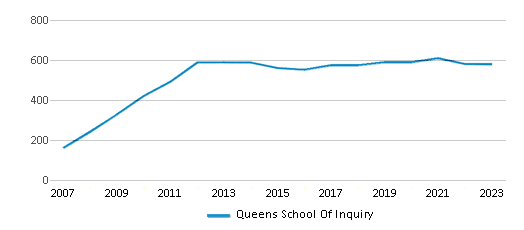
Gender %
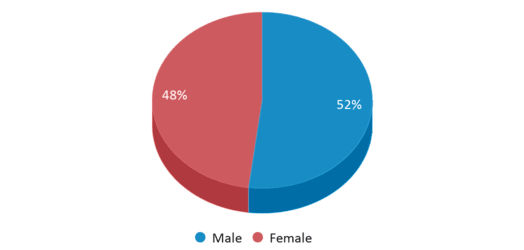
Total Classroom Teachers
49 teachers
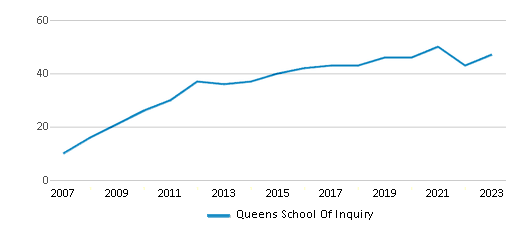
Students by Grade
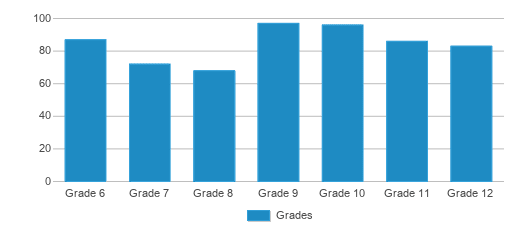
School Rankings
Queens School Of Inquiry ranks within the top 50% of all 4,377 schools in New York (based off of combined math and reading proficiency testing data).
The diversity score of Queens School Of Inquiry is 0.74, which is more than the diversity score at state average of 0.72. The school's diversity has stayed relatively flat over five school years.
Overall Testing Rank
#1749 out of 4377 schools
(Top 50%)
(Top 50%)
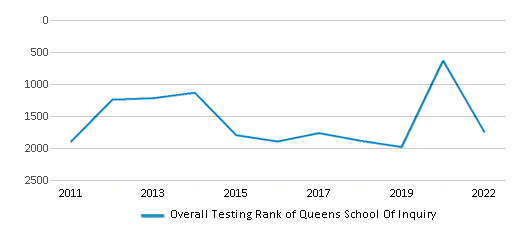
Math Test Scores (% Proficient)
37%
46%

Reading/Language Arts Test Scores (% Proficient)
66%
49%
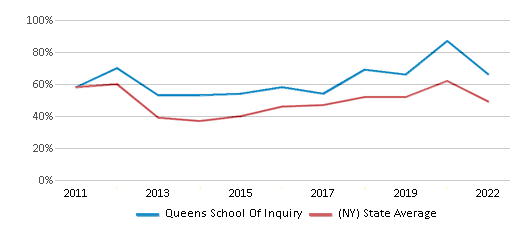
Science Test Scores (% Proficient)
80-84%
78%
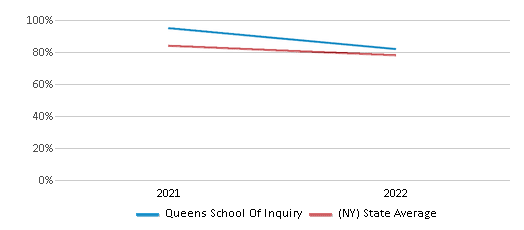
Student : Teacher Ratio
12:1
11:1
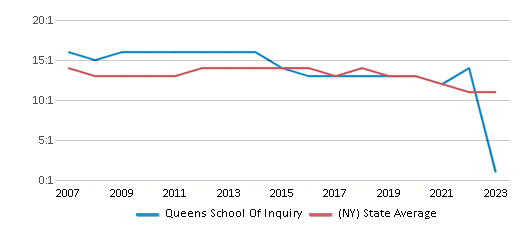
American Indian
n/a
1%
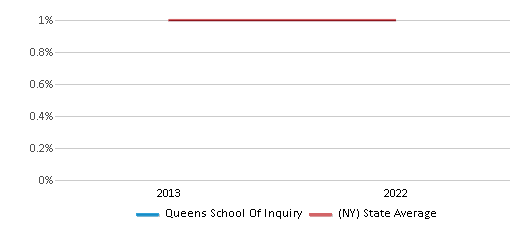
Asian
35%
10%
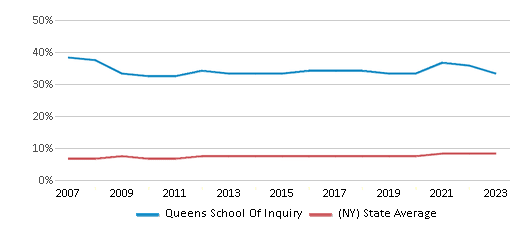
Hispanic
29%
30%

Black
15%
16%
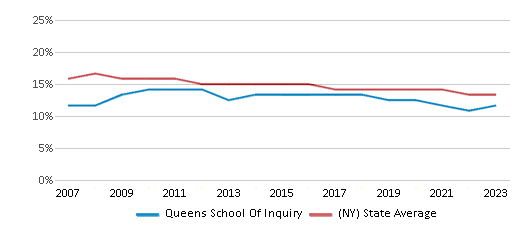
White
19%
40%
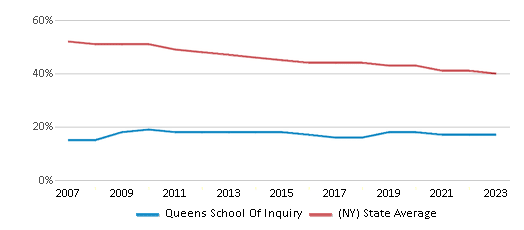
Hawaiian
n/a
n/a
Two or more races
2%
3%

All Ethnic Groups
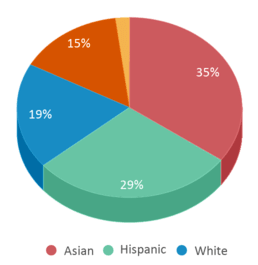
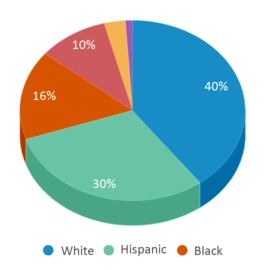
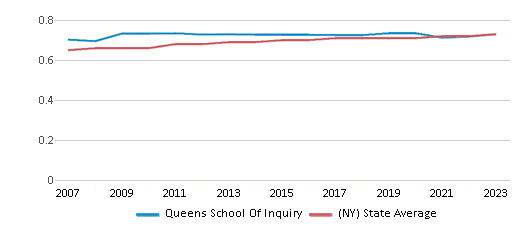
Graduation Rate
≥95%
87%
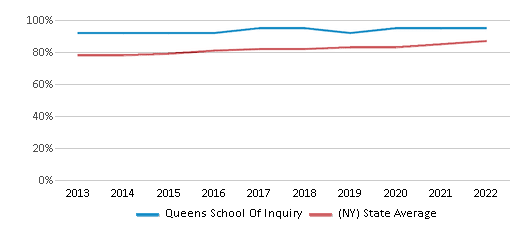
Participates in the National School Lunch Program (NSLP)
Yes
Eligible for Free Lunch
63%
54%
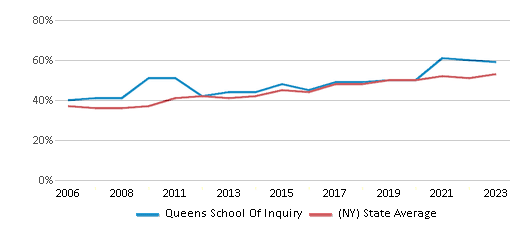
Eligible for Reduced Lunch
2%
3%
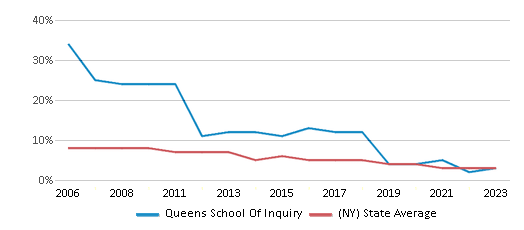
School Statewide Testing
School District Name
Source: National Center for Education Statistics (NCES), NY Dept. of Education
Profile last updated: 02/09/2025
Frequently Asked Questions
What is Queens School Of Inquiry's ranking?
Queens School Of Inquiry is ranked #1749 out of 4,377 schools, which ranks it among the top 50% of public schools in New York.
What percent of students have achieved state testing proficiency in math and reading?
37% of students have achieved math proficiency (compared to the 46% NY state average), while 66% of students have achieved reading proficiency (compared to the 49% NY state average).
What is the graduation rate of Queens School Of Inquiry?
The graduation rate of Queens School Of Inquiry is 95%, which is higher than the New York state average of 87%.
How many students attend Queens School Of Inquiry?
589 students attend Queens School Of Inquiry.
What is the racial composition of the student body?
35% of Queens School Of Inquiry students are Asian, 29% of students are Hispanic, 19% of students are White, 15% of students are Black, and 2% of students are Two or more races.
What is the student:teacher ratio of Queens School Of Inquiry?
Queens School Of Inquiry has a student ration of 12:1, which is higher than the New York state average of 11:1.
What grades does Queens School Of Inquiry offer ?
Queens School Of Inquiry offers enrollment in grades 6-12 (offers virtual instruction).
What school district is Queens School Of Inquiry part of?
Queens School Of Inquiry is part of New York City Geographic District #25 School District.
School Reviews
5 7/17/2013
im going to this school in the year 2013 and i am wondering if u will recive the school supply list in mail or other etc. please answer my review an i highly recommend this school for kids who are really into science! this school is the best school in nyc jk it is the best school in the usa i had even seen thank u and plz go to this awsome school c u later emy!
5 1/17/2011
Started QSI this year in eighth grade. Prior school was accelerated and we needed an advanced curriculum. Being a 6-12 they had the courses we needed. I could not ask for a more responsive environment. There is great flexibility regarding classes and my daughter will complete most regents by end of ninth grade. They are an early college school so she will then take college courses for credit at Queens College. Other schools with screened programs would not accommodate accelerated students; she would have to repeat courses already taken. Staff is available to work with students who want to further explore their fields and my daughter is thoroughly engaged in her education. There are many clubs and they will create new ones if students are interested. Highly recommended for advanced academics in a small school environment where educators make sure the bar is set high for those who are interested.
Review Queens School Of Inquiry. Reviews should be a few sentences in length. Please include any comments on:
- Quality of academic programs, teachers, and facilities
- Availability of music, art, sports and other extracurricular activities
Recent Articles

What Is A Charter School?
Explore the world of charter schools in this comprehensive guide. Learn about their history, how they operate, and the pros and cons of this educational innovation. Discover key facts about charter schools, including admission policies, demographics, and funding, as well as what to look for when considering a charter school for your child.

10 Reasons Why High School Sports Benefit Students
Discover the 10 compelling reasons why high school sports are beneficial for students. This comprehensive article explores how athletics enhance academic performance, foster personal growth, and develop crucial life skills. From improved fitness and time management to leadership development and community representation, learn why participating in high school sports can be a game-changer for students' overall success and well-being.

February 05, 2025
Understanding the U.S. Department of Education: Structure, Impact, and EvolutionWe explore how the Department of Education shapes American education, from its cabinet-level leadership to its impact on millions of students, written for general audiences seeking clarity on this vital institution.









